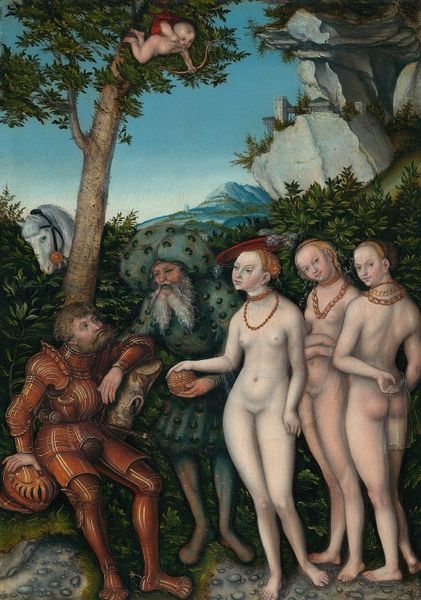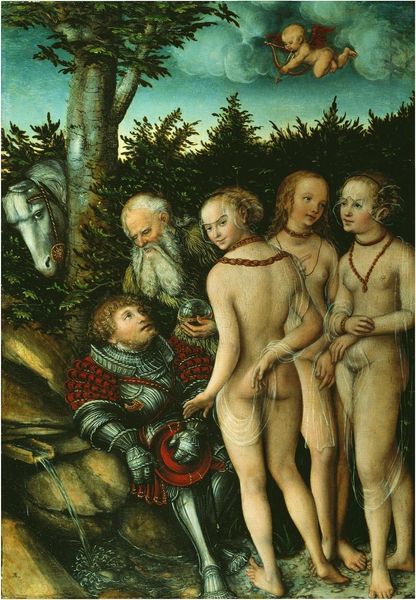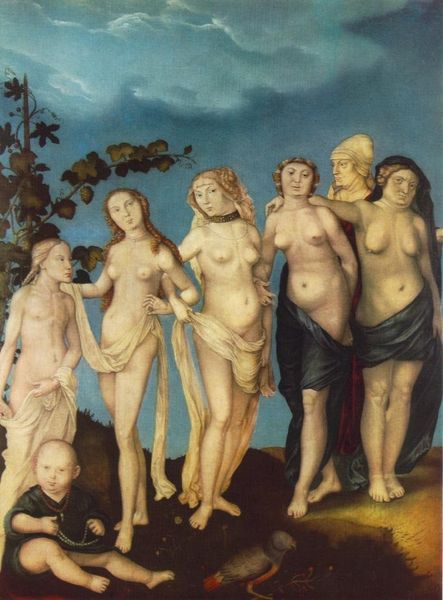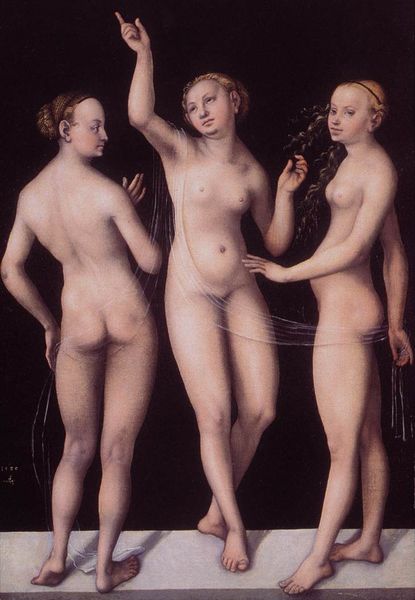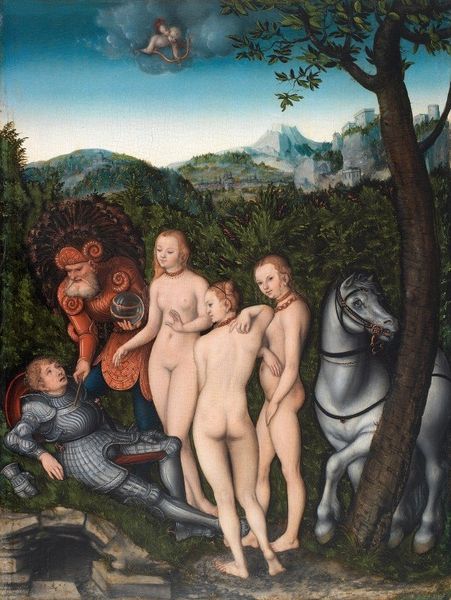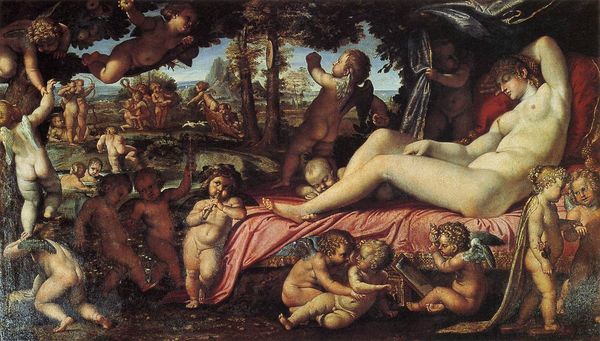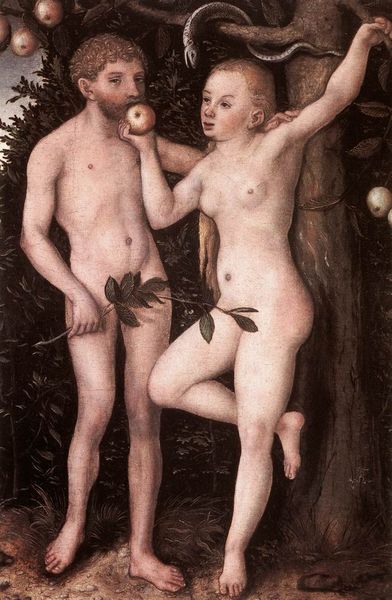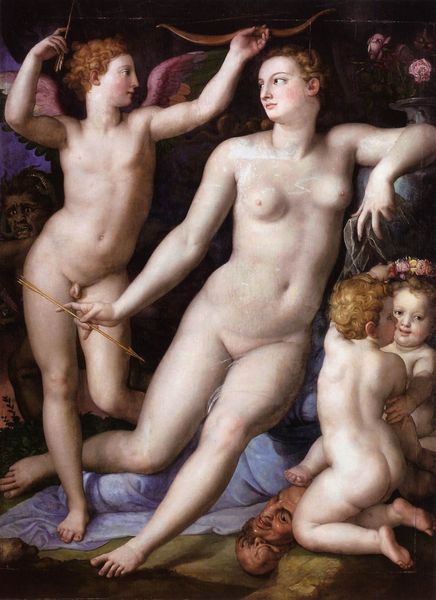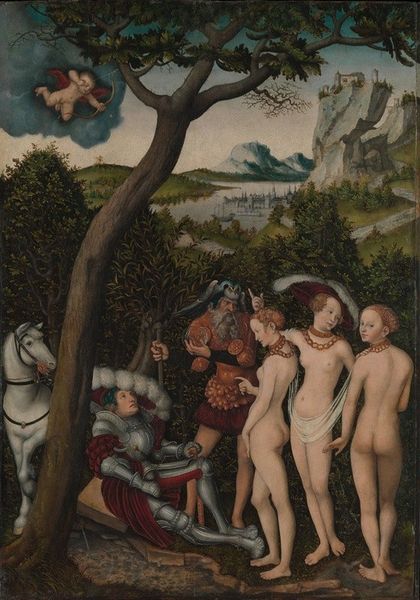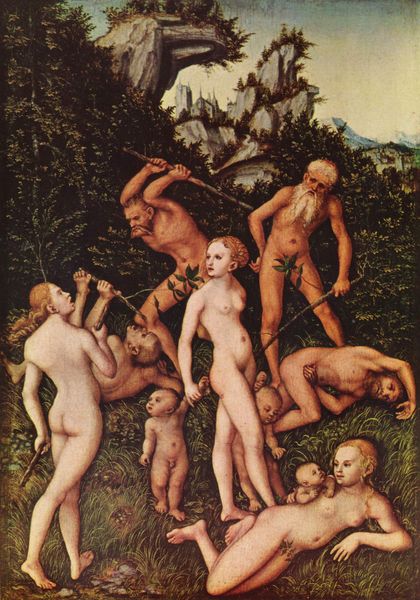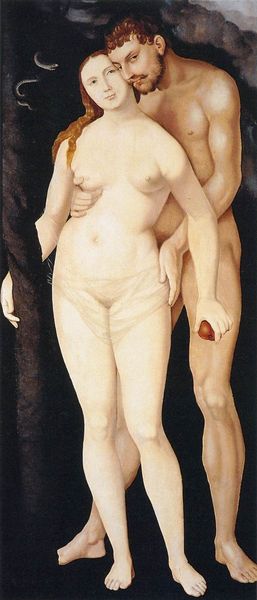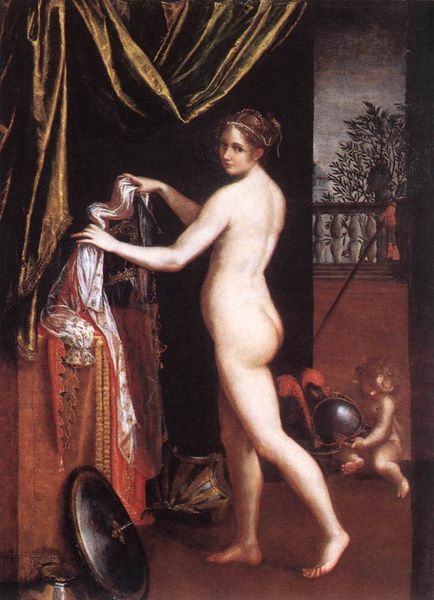
painting, oil-paint
#
portrait
#
allegory
#
painting
#
oil-paint
#
figuration
#
roman-mythology
#
mythology
#
genre-painting
#
history-painting
#
northern-renaissance
#
italian-renaissance
#
nude
Dimensions: 43 x 32.2 cm
Copyright: Public domain
Editor: This is Lucas Cranach the Elder's *The Judgement of Paris* from 1514, currently residing at the Wallraf-Richartz Museum in Cologne. I’m immediately struck by how the artist has blended these classical figures into such a uniquely Northern European landscape, creating a rather strange combination. What's your interpretation of this painting? Curator: This painting provides a window into the socio-political functions of art during the Renaissance. Cranach was court painter to the Electors of Saxony, and images like this weren't just aesthetic objects. They were actively shaping perceptions. The ‘Judgment of Paris’ became popular as it allowed artists to legitimize the depiction of nude female figures. Think about the power dynamic – Paris, dressed in armor, the embodiment of princely authority, makes a very subjective judgement that determines destiny. It is important to also recognize the image of powerful females displayed. How might the painting function to further the social narratives in Northern Europe at the time? Editor: So, you're saying the seemingly mythological subject is also a way to reinforce societal values related to judgement and female presentation? I hadn't considered how explicitly tied these mythological scenes were to political displays of wealth and power. Curator: Precisely. Notice also Cranach’s style. He renders this classical scene not with Italian idealism, but in a Germanic landscape. Even the figures lack classical proportions. How do you think this deviation from the idealized Italian Renaissance imagery impacts the reception and message of the painting? Editor: That makes a lot of sense. Presenting the myth in a more local context probably made the classical allusions accessible to viewers from Northern Europe who didn't necessarily have extensive knowledge of antiquity. I initially saw strangeness; now I appreciate the culturally specific interpretation. Curator: Absolutely! Understanding the societal forces active during artistic creation and public viewing broadens our perspectives and enhances art appreciation. Editor: This was really enlightening! I now have a fresh view on the complexities within this image.
Comments
No comments
Be the first to comment and join the conversation on the ultimate creative platform.
